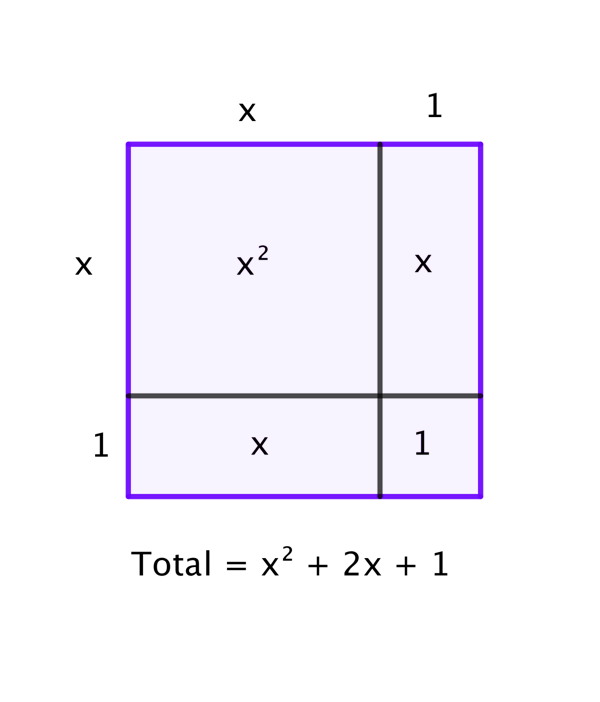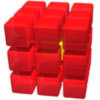Skip over navigation
We can show that $14^2 = 196$ by considering the area of a $14$ by $14$ square:
We can show that $(x + 1)^2 \equiv x^2 + 2x + 1$ by considering the area of an $(x + 1)$ by $(x + 1)$ square:

Show in a similar way that $(x + 2)^2 \equiv x^2 + 4x + 4$.
Then use the same method to evaluate $(x + 3)^2$ and $(x + a)^2$.

Or search by topic
Number and algebra
Geometry and measure
Probability and statistics
Working mathematically
Advanced mathematics
For younger learners
Partitioning Revisited
Age 11 to 14
Challenge Level 





We can show that $14^2 = 196$ by considering the area of a $14$ by $14$ square:
We can show that $(x + 1)^2 \equiv x^2 + 2x + 1$ by considering the area of an $(x + 1)$ by $(x + 1)$ square:

Show in a similar way that $(x + 2)^2 \equiv x^2 + 4x + 4$.
Then use the same method to evaluate $(x + 3)^2$ and $(x + a)^2$.
You may also like
Cubes Within Cubes Revisited
Imagine starting with one yellow cube and covering it all over with a single layer of red cubes, and then covering that cube with a layer of blue cubes. How many red and blue cubes would you need?

